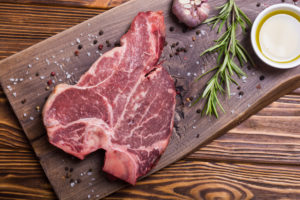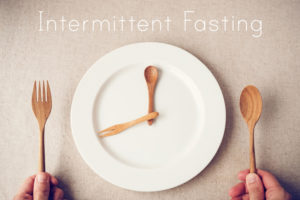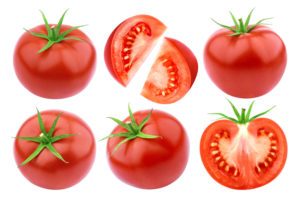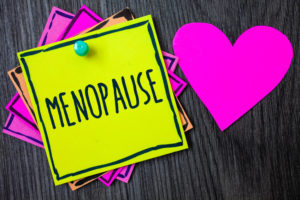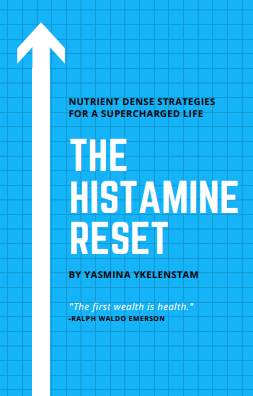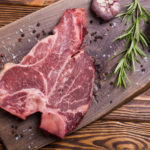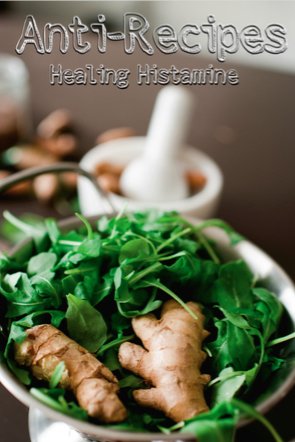
Getting enough protein can be challenging in general, but even more so when you’re dealing with histamine intolerance. After all, we’ve got to be careful about our intake of biogenic amines from meat, aged and cured meats are out, and leftovers will just accumulate histamine. And then there’s the fact that meats can be inflammatory when we’re really trying to lower our inflammation levels. A nutrient-dense, plant-based diet can be really healing for us, but then protein may get neglected. Here are some ideas for getting your protein in while keeping histamine low.
HIGH PROTEIN LEGUMES
As I mentioned in my Beanz Meanz Antihistamines post, legumes, while categorized as high histamine on some lists, have been found to contain a histamine-inhibiting compound called sandosaponin. They also have fiber and anti-inflammatory properties which make me want to keep them in my diet, at least occasionally.
Beans also just happen to be a great source of plant-based protein, with some of the best sources including soybeans, chickpeas, and lentils. Black soybeans are a great option, as they are rich in color, indicating the presence of important phytonutrients. Chickpeas and lentils are not only high protein, they’re also high in histamine-degrading diamine oxidase (DAO). For the most DAO, sprout the chickpeas and lentils before using. If you want a delicious way to get in some protein and increase your DAO to fight histamine, check out my Chickpea Blondies recipe. Or for a more savory snack, try these gluten-free lentil pita chips.
SPIRULINA
Spirulina is a type of blue-green microalgae that has been a staple in the diet of the Aztec and Mayan people for thousands of years. That may be in part due to the fact that spirulina is one of the richest sources of plant proteins available. It’s 60-70% protein. Not only is spirulina a good source of plant-based protein, it’s also been found to prevent mast cells from releasing histamine. How cool is that? A plant-based protein that is also an antihistamine. It’s also rich in antioxidants, anti-inflammatory compounds, vitamins and minerals, and important fatty acids. Studies on spirulina indicate that a pigment called phycocyanin may be the ingredient that provides the antihistamine effect. Read about phycocyanin here. Spirulina is easy to add to a juice or smoothie. Try my Green Apple Ginger smoothie with Spirulina.
HEMP PROTEIN (OR SEEDS)
It seems like hemp is being used for more purposes all the time. You can make fabric out of it, build with it, use it for fuel, eat the whole seeds, drink hemp milk, and the list goes on. There’s also hemp protein, which is made from grinding up the hemp seeds into a powder. A typical ¼ cup serving tends to contain about 15 grams of protein, which may vary slightly by brand. For those of us with compromised digestive systems, it’s good to know that hemp protein is highly digestible –at a rate of 91–98%. However, that changes with heat processing, which reduces the digestibility to only 10%. For that reason, it’s important to make sure your hemp protein powder comes from cold-pressed seeds. Add hemp protein to your favorite low histamine smoothie, or start using the seeds in other recipes. The hemp seeds (or hearts, as they are also called) are a great topping to a salad.
FRESH & CLEAN MEATS AND FISH
Of course, good old animal protein or fish is always an option, provided that it is fresh and cooked properly. After all, biogenic and other amines accumulate during food storage or decay. Learn about histamine, food storage, and packaging here. Otherwise, try to just buy fresh, and buy what you can eat — or freeze the rest. And don’t overeat protein. Studies show undigested protein in the gut can raise histamine levels, so it’s important not to eat more than the requirements for your size, age, and physical activity you can digest well.
WONDERING HOW TO PREPARE THESE FOODS?
No worries. I’ve put together a complete histamine reset for you. It’s got antihistamine, anti-inflammatory recipes that use healthy proteins and plenty of fresh produce. I also included some lifestyle strategies to help lower the stress, balance out histamine, and get your body on the path to healing. Check out my 28-Day Histamine Reset.
——- REFERENCES ——-
House, J. D., Neufeld, J., Leson, G. (2010). Evaluating the quality of protein from hemp seed (Cannabis sativa L.) products through the use of the protein digestibility-corrected amino acid score method. Journal of Agriculture and Food Chemistry. 58(22), 11801-7. doi: 10.1021/jf102636b. Epub 2010 Oct 26.
Masini, E., et al. (2007). “Pea seedling histaminase as a novel therapeutic approach to anaphylactic and inflammatory disorders.” The Scientific World Journal, 7, 888-902. Retrieved from: https://www.hindawi.com/journals/tswj/2007/408423/abs/
Skypala, I. J., Williams, M., Reeves, L., Meyer, R., & Venter, C. (2015). Sensitivity to food additives, vaso-active amines and salicylates: a review of the evidence. Clinical and Translational Allergy, 5, 34. http://doi.org/10.1186/s13601-015-0078-3
Windey, K., De Preter, V., Verbeke, K. (2012). Relevance of protein fermentation to gut health. Molecular Nutrition & Food Research, 56(1):184-96. doi: 10.1002/mnfr.201100542. Epub 2011 Nov 25.
https://www.ncbi.nlm.nih.gov/pubmed/22121108
WEBSITES:
https://www.bobsredmill.com/hemp-protein-powder.html


